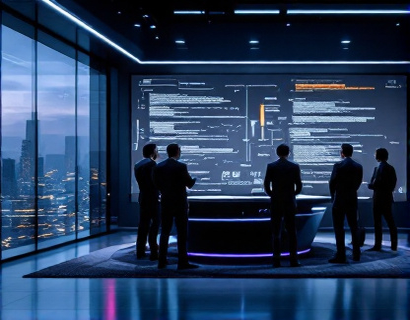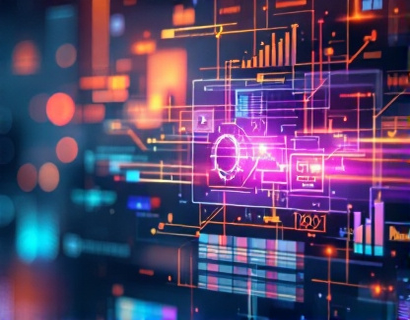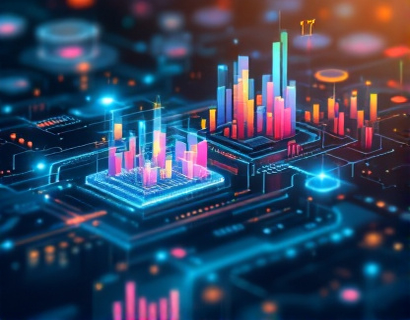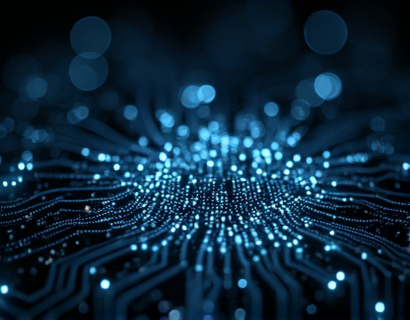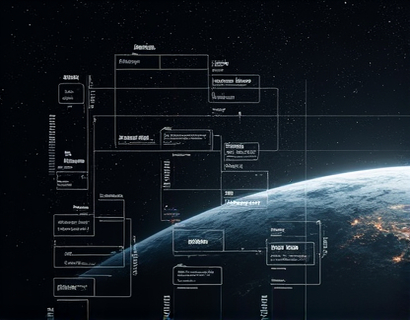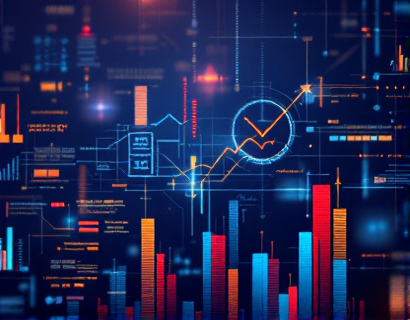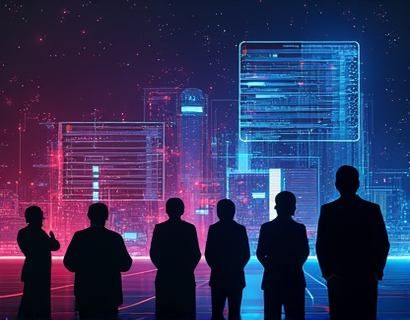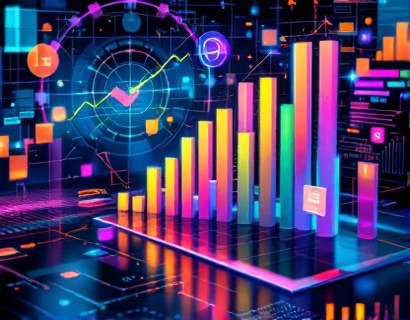Crypto and AI Synergy: Revolutionizing Decentralized Productivity with Next-Gen Solutions
The intersection of cryptocurrency and artificial intelligence (AI) is giving birth to a new paradigm in decentralized productivity. This synergy is not just a technological curiosity but a transformative force that is redefining how we approach tasks, collaborate, and manage digital workflows. For tech professionals and early adopters, this convergence offers unprecedented opportunities to enhance efficiency, security, and innovation. This article explores the practical applications and future implications of this powerful combination, providing insights into how it is reshaping the digital landscape.
Understanding the Basics: Cryptocurrency and AI
Before delving into the synergy, it's essential to understand the fundamental concepts of cryptocurrency and AI. Cryptocurrency, often associated with blockchain technology, is a digital or virtual currency that uses cryptography for security. It operates on a decentralized network, eliminating the need for intermediaries like banks. Blockchain, the underlying technology, ensures transparency, immutability, and security through a distributed ledger system.
Artificial intelligence, on the other hand, refers to the simulation of human intelligence processes by machines, particularly computer systems. These processes include learning (the acquisition of information and rules for using it), reasoning (using rules to reach approximate or definite conclusions), and self-correction. AI can operate autonomously or be integrated into existing systems to enhance their functionality.
The combination of these two technologies creates a powerful toolset for decentralized applications (dApps) that can revolutionize various sectors, from finance and healthcare to supply chain and beyond.
The Synergy: How Crypto and AI Enhance Decentralized Productivity
The synergy between cryptocurrency and AI is multifaceted, offering solutions that are more secure, efficient, and user-friendly. Here’s how this combination is transforming decentralized productivity:
Enhanced Security and Trust
One of the most significant advantages of using cryptocurrency in AI-driven dApps is the enhanced security and trust they provide. Blockchain's inherent properties ensure that data is tamper-proof and transparent, reducing the risk of fraud and errors. AI can further bolster security by detecting and mitigating threats in real-time, adapting to new vulnerabilities as they emerge. This dual-layer security is crucial for applications handling sensitive data, such as financial transactions or personal health information.
Smart Contracts and Automated Processes
Smart contracts, self-executing contracts with the terms directly written into code, are a cornerstone of decentralized applications. When combined with AI, smart contracts can become even more intelligent and adaptive. AI can analyze complex data sets to make informed decisions, execute contract terms more accurately, and even predict potential issues before they arise. For instance, in supply chain management, AI can optimize routes and inventory levels, while smart contracts ensure that all parties adhere to the agreed terms automatically.
Improved User Experience and Accessibility
The integration of AI in decentralized applications significantly enhances user experience. AI-driven interfaces can provide personalized recommendations, streamline workflows, and offer intuitive interactions. For example, a decentralized marketplace can use AI to suggest products based on user behavior and preferences, making the shopping experience more seamless and enjoyable. Additionally, AI can translate complex blockchain concepts into user-friendly interfaces, making these technologies more accessible to a broader audience.
Data Analytics and Insights
AI's strength lies in its ability to process and analyze vast amounts of data quickly and accurately. In the context of decentralized applications, this capability is invaluable. AI can help dApps derive meaningful insights from blockchain data, such as transaction patterns, user behavior, and market trends. These insights can inform better decision-making, optimize operations, and identify new opportunities. For instance, a decentralized finance (DeFi) platform can use AI to analyze market data and suggest optimal investment strategies to users.
Decentralized AI Marketplaces
One of the most exciting applications of the crypto-AI synergy is the emergence of decentralized AI marketplaces. These platforms allow developers and businesses to buy, sell, and trade AI models and data sets in a secure and transparent manner. This democratization of AI resources levels the playing field, enabling smaller entities to access cutting-edge technologies without the need for substantial upfront investments. For example, a developer can purchase a pre-trained AI model for image recognition and integrate it into their dApp, while the model's creator receives fair compensation.
Tokenization and Incentivization
Tokenization, the process of converting assets into tokens on a blockchain, plays a crucial role in incentivizing participation in decentralized AI ecosystems. Tokens can be used to reward users for contributing data, participating in model training, or providing computational resources. This token-based incentivization aligns the interests of various stakeholders, fostering a collaborative environment. For instance, a decentralized data marketplace can issue tokens to users who share high-quality data, ensuring that data providers are compensated fairly and encouraging more users to contribute.
Case Studies: Real-World Applications
To better understand the practical implications of this synergy, let's look at a few real-world examples:
- Decentralized Predictive Maintenance: A manufacturing company uses a dApp powered by AI and blockchain to predict equipment failures before they occur. AI analyzes sensor data to identify patterns indicative of potential issues, while smart contracts automate the procurement of replacement parts and notify maintenance teams. This approach reduces downtime and maintenance costs.
- Supply Chain Transparency: A global retailer implements a decentralized supply chain management system that uses AI to track products from origin to store. Blockchain ensures that all transactions are recorded and verifiable, while AI optimizes logistics and inventory management. Consumers can scan a product's QR code to see its entire journey, enhancing trust and transparency.
- Decentralized Healthcare Data Management: A healthcare provider uses a dApp to securely store and share patient data. AI algorithms analyze this data to provide personalized treatment recommendations, while blockchain ensures data privacy and compliance with regulations. Patients have control over their data and can grant access to healthcare providers as needed.
The Future of Decentralized Productivity
The future of decentralized productivity, powered by the synergy of cryptocurrency and AI, is promising and full of potential. As these technologies continue to evolve, we can expect even more innovative applications across various industries. Here are some key trends and developments to watch:
- Increased Adoption: As the benefits of decentralized AI applications become more apparent, we can expect broader adoption across sectors. Industries such as finance, healthcare, and logistics will likely see significant transformations.
- Enhanced Interoperability: Efforts to standardize protocols and interfaces will make it easier for different dApps to work together seamlessly, creating a more interconnected ecosystem.
- Advanced AI Models: The development of more sophisticated AI models, including those that can operate on decentralized networks, will further enhance the capabilities of dApps. This includes AI models that can learn and adapt in real-time, without the need for centralized data repositories.
- Regulatory Clarity: As the use of blockchain and AI grows, regulatory frameworks will evolve to provide clearer guidelines. This will help address concerns around compliance and liability, fostering greater trust and adoption.
Conclusion
The convergence of cryptocurrency and AI is not just a technological novelty but a transformative force that is reshaping the landscape of decentralized productivity. By enhancing security, automating processes, and providing valuable insights, this synergy is enabling new levels of efficiency and innovation. For tech professionals and early adopters, embracing this synergy offers a glimpse into a future where decentralized applications are more powerful, user-friendly, and accessible. As we continue to explore and develop these technologies, the possibilities for decentralized productivity are truly limitless.









